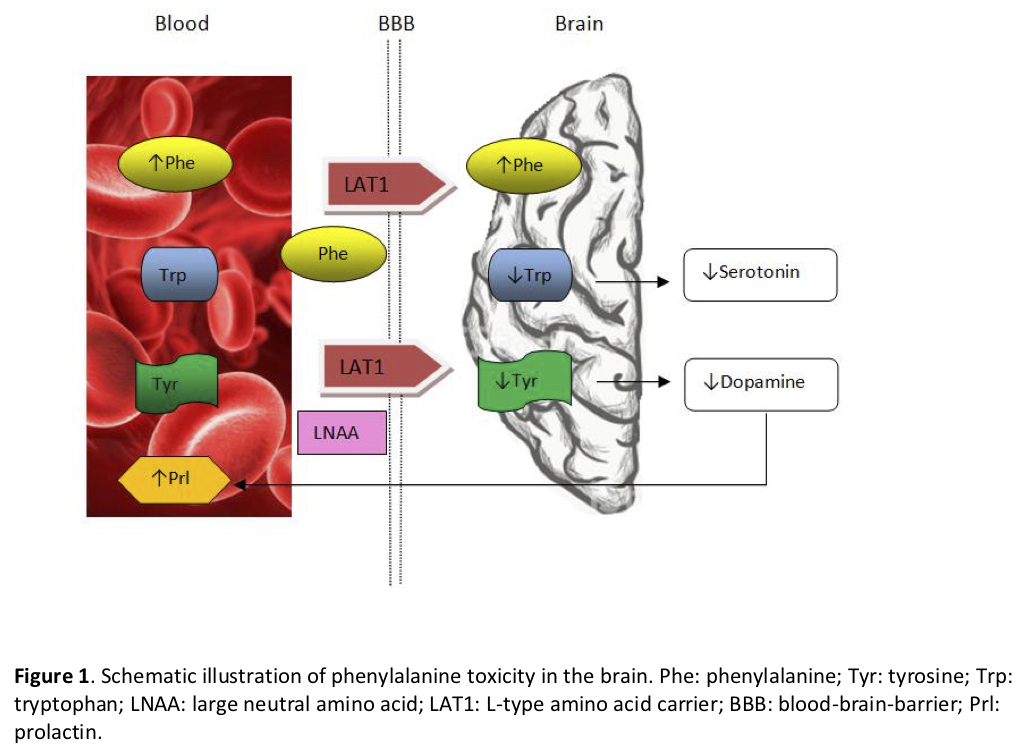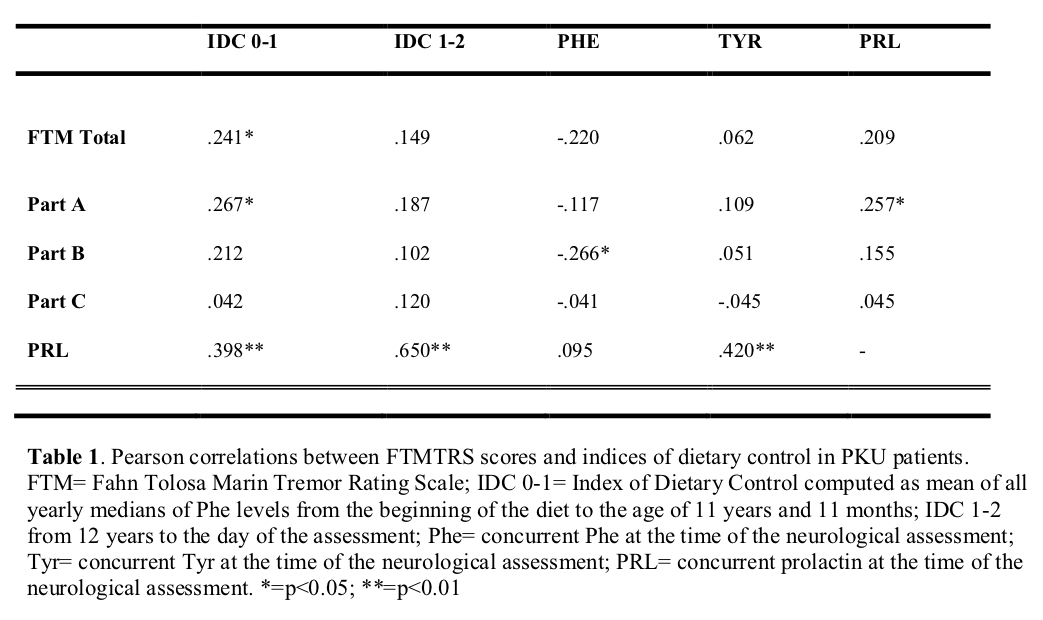Session Information
Date: Saturday, October 6, 2018
Session Title: Rare Genetic and Metabolic Diseases
Session Time: 1:45pm-3:15pm
Location: Hall 3FG
Objective: To assess the occurrence, age at onset, distribution, associated neurological signs and possible pathogenetic biomarkers of tremor in PKU.
Background: PKU is an inborn error of phenylalanine (Phe) metabolism due to the deficit of the phenylalanine hydroxylase, the first step in the metabolic pathway of dopamine (DA) synthesis, which converts Phe into tyrosine (Tyr) [figure1]. If not early treated the disease results in severe neurological impairment. Prolactin (PRL) level is affected by (and reflects) brain DA availability.
Methods: 74 PKU (59 early- and 15 late-treated) and 43 control subjects (age range 7-54) underwent individual and familiar tremor history, clinical assessment of tremor using the Fahn-Tolosa-Marin Tremor Rating Scale (FTMTRS). Historical and concomitant biochemical data reflecting the severity of the disease and the compliance to treatment (blood levels of Phe and Tyr) and blood PRL were include in the analysis.
Results: 29 out of 74 PKU patients were affected by tremor (19/59 among early- and 10/15 among late-treated) with the characteristics of postural tremor in 8 patients; postural and action tremor in 18; and a resting, action and postural hand tremor in 3. The tremor, which affected upper limbs in all subjects, lower limbs in 3, voice in 1, and tongue in 2, showed variability of frequency and amplitude and was worsened by emotion, fatigue. Familiar history of tremor was found in 7/29 PKU patients with tremor (5 early- and 2 late-treated) and none of the controls. FTMTRS severity score range was 0-27 in early-treated PKU, 0-19 in late-treated PKU and 0-5 in controls. Except for brisk tendon reflexes, neurological examination of PKU subjects was normal. Statistical analysis [Table1] showed that: FTMTRS score correlated with the levels of blood Phe during childhood and with concurrent level of PRL. Blood concentration of Phe is associated with an increase of PRL in early-treated PKU but not in late-treated PKU.
Conclusions: The main clinical features of tremor in PKU evoke those of essential tremor, although with an higher occurrence and an earlier onset as compared to essential tremor in the general population. A positive correlation was found between severity score at FTMTRS and PRL levels, while no association was found between concurrent Phe levels and tremor. This pattern suggests that high Phe levels may result in an anticipation of the tremor onset in subjects who are possibly prone to this disorder.
References: Pérez-Dueñas B, Valls-Solé J, Fernández-Alvarez E, Conill J, Vilaseca MA, Artuch R, Campistol J. Characterization of tremor in phenylketonuric patients. J Neurol. 2005 Nov;252(11):1328-34. Pietz J. Neurological aspects of adult phenylketonuria. Curr Opin Neurol. 1998;11:679-688.
To cite this abstract in AMA style:
F. Nardecchia, F. Manti, S. De Leo, C. Carducci, V. Leuzzi. Clinical characterization of tremor in patients with Phenylketonuria (PKU) [abstract]. Mov Disord. 2018; 33 (suppl 2). https://www.mdsabstracts.org/abstract/clinical-characterization-of-tremor-in-patients-with-phenylketonuria-pku/. Accessed April 26, 2025.« Back to 2018 International Congress
MDS Abstracts - https://www.mdsabstracts.org/abstract/clinical-characterization-of-tremor-in-patients-with-phenylketonuria-pku/


